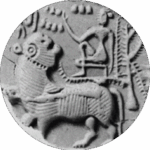Bhava and Beef Tea
It’s a wonderful thing about imaginative fiction that it can stray into impossible, unrealistic situations and resonate all the more deeply because of that. Someone touched on this the other day when discussing Murakami. So, when reading this novel by Ishiguro, I couldn’t help thinking of real situations in which in which humans are treated with cynical contempt, while their humanity remains as a silent accusation against those who cause and sometimes indeed benefit from their suffering. Locally, I think of Palestinian refugee children. In India I might think of street urchins.
In real life situations, there’s the danger of bhava clouding the imagination, and drawing connections where there should not be any. When a person stands before us in suffering, it’s easy to think of other suffering persons we have known, or make him a symbol of all the suffering in the world, so that what we actually see is not the one before us, but something entirely unconnected to him. When this happens, it becomes impossible to give such a person the particular sort of attention that might be of real help. I think this is the difference between pity and compassion. Compassion is a state of greater alertness, perceptiveness and intelligence.
Good writers like Ishiguro avoid maudlin scenes that spin us into tears. At no point in Never Let Me Go was I moved to tears, and yet the book quietly penetrated my soul. I felt for the characters as if they were real, and of course they are real in a certain sense. As for the situation, there is little room for doubt that we humans would permit similar horrors to occur.
I just went back to read the story of Kasturbai Gandhi and her rejection of beef tea. I don’t know about the beef tea, but I think I’d prefer to be put out of my misery than accept Kathy’s kidney – first or second.
